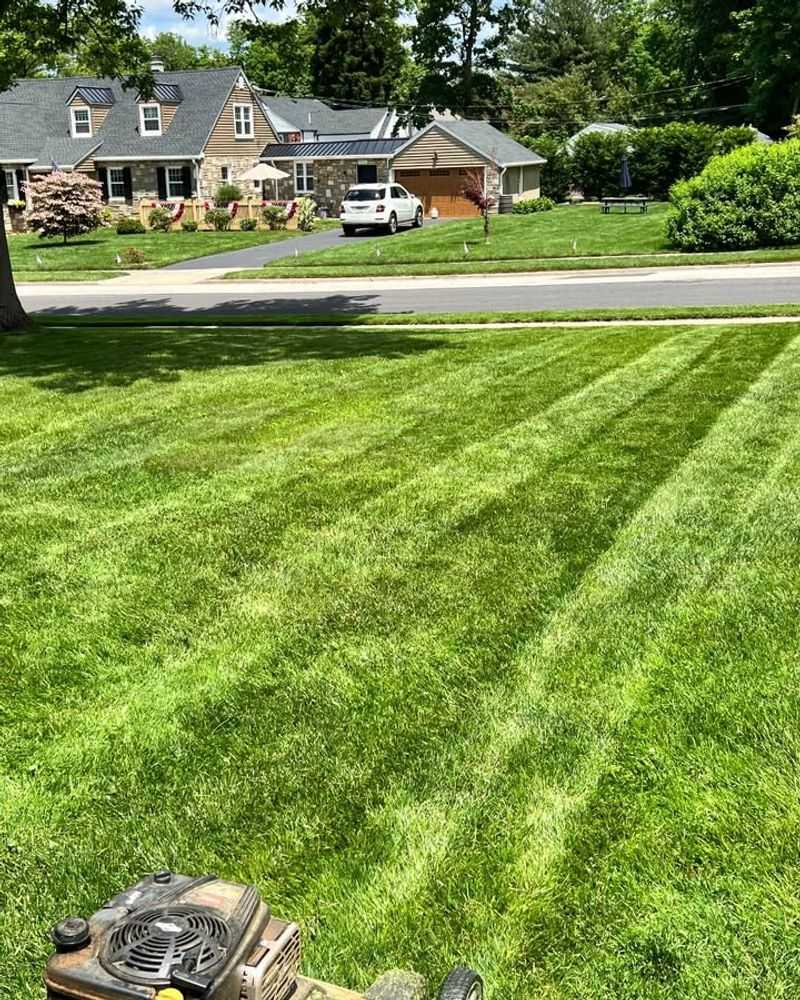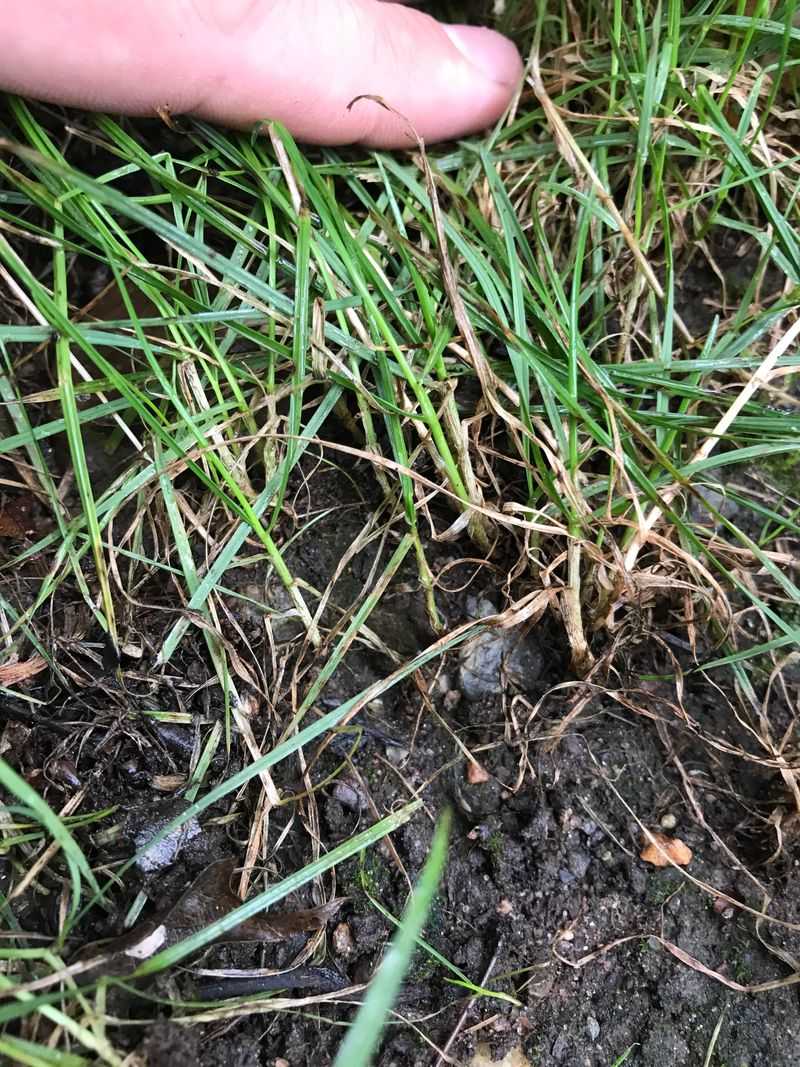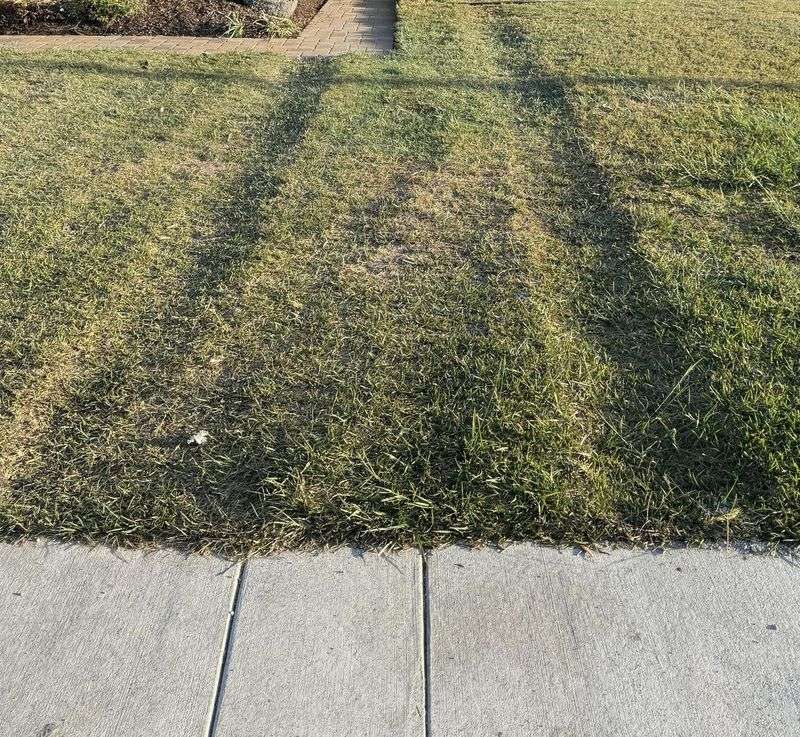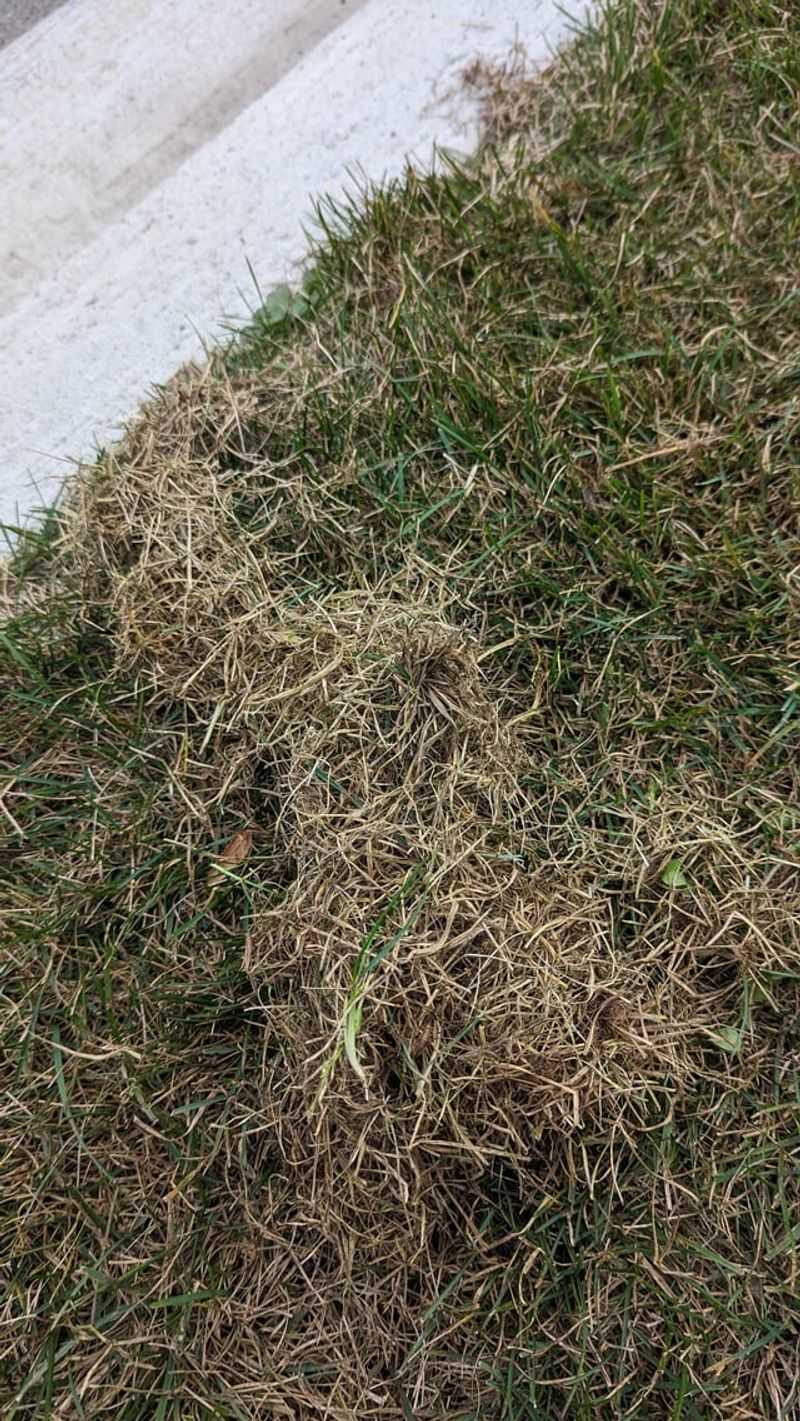Mowing in a new direction might sound like a tiny tweak, but it can make your Kentucky lawn wake up a lot happier in spring. I’ve tried it myself, and it’s wild how much smoother the grass grows when you switch things up before winter hits.
This little change helps prevent ruts and lets your lawn stand tall instead of leaning the way your mower usually goes. It’s an easy final step that gives you a thicker, fresher carpet of green when warm days roll back around.
1. Prevents Grass From Leaning One Way
Grass blades develop memory, just like your hair does when you part it the same way every day. When you mow in the same pattern week after week across Kentucky lawns, the grass starts leaning permanently in that direction.
Switching up your mowing angle before winter helps blades stand upright again. Upright grass captures more sunlight and grows denser when spring arrives, creating that thick carpet look everyone wants in their yard.
2. Reduces Soil Compaction in Tire Tracks
Your mower weighs a lot, and running it over the same path creates hard-packed soil underneath. Compacted soil in Kentucky yards makes it tough for grassroots to spread and breathe properly during their dormant winter period.
Changing direction means your wheels roll over different areas, giving previously compressed spots time to recover. Looser soil allows better water drainage and root expansion, which translates directly to thicker grass growth throughout spring and summer months ahead.
3. Encourages Stronger Root Development
Roots grow sideways searching for nutrients and water, but they avoid traveling through compacted zones created by repetitive mowing patterns. When you switch mowing directions across your Kentucky property, roots encounter less resistance in multiple directions.
Stronger root systems develop when grass can spread freely underground without hitting hard-packed barriers. Deep, branching roots survive winter stress better and push up denser grass coverage when temperatures warm up again in springtime across the Bluegrass State.
4. Eliminates Rut Formation Before Freeze
Ruts form gradually when mower wheels follow identical paths repeatedly, creating low spots that collect water during Kentucky’s winter rains and freezes. Water pooling in these grooves can cause grass to fail and create muddy messes come spring thaw.
A directional change during your final mow distributes weight differently, preventing those channels from deepening further. Leveling out potential problem spots now means better drainage all winter long and fewer bare patches requiring repair when growing season returns to your neighborhood.
5. Improves Nutrient Distribution Evenly
Grass clippings fall differently depending on which direction you mow, and repeated patterns leave some areas nutrient-rich while others get shortchanged. Kentucky lawns benefit from balanced nutrition distribution, especially before winter dormancy begins.
Mowing a new direction spreads clippings across previously neglected zones, feeding the entire lawn more uniformly. Even nutrient coverage means consistent grass thickness throughout your yard rather than patchy areas with lush and thin spots competing for attention next spring.
6. Breaks Up Thatch Buildup Patterns
Thatch is that spongy layer of dead grass and roots sitting between soil and green blades, and it builds up faster along mowing lines. Too much thatch suffocates Kentucky grass by blocking water and air from reaching roots during winter months.
Changing your mowing angle disrupts established thatch patterns and helps break down accumulated material more effectively. Better air circulation and moisture penetration during winter dormancy prepare your lawn for explosive spring growth without thatch-related barriers slowing things down unnecessarily.
7. Gives Grass Blades a Fresh Growth Angle
Cutting grass from a different direction literally gives each blade a fresh trim on a side that rarely gets attention. This stimulates new growth points along the blade edges, encouraging Kentucky grass to spread laterally and fill in bare spots.
Fresh cuts signal the plant to produce more shoots before winter arrives, creating additional grass blades per square inch. More blades mean denser turf when spring sunshine returns, giving your lawn that professional golf-course appearance neighbors will definitely notice and admire.








